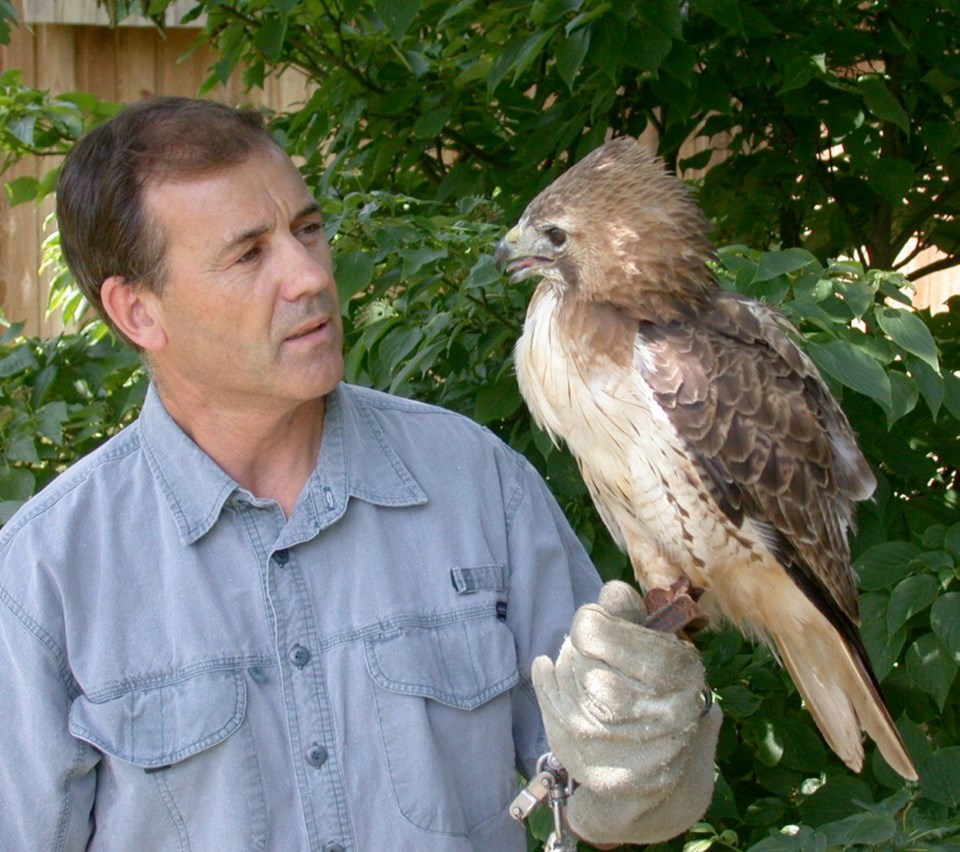Same-gender rape, adultery and penises fixed with barbs to better grip a partner are some elements of bird sex, says a wildlife biologist who will talk in Sidney Saturday afternoon.
“It’s quite a sordid story,” said David Bird, professor of wildlife biology at McGill University in Montreal, who recently retired to North Saanich.
“All the intimate sex lives of birds — there are a lot things that people don’t realize,” he said. “It’s certainly not a talk meant for kids.”
Bird, a scientist and author of two books on birds, is speaking at the Shoal Centre on the topic How Birds Do It.
Bird’s stories are based on documented science, mostly gleaned from academic papers. They can virtually all be traced to the dominant motivation in wild animals to pass along their genes to successful, surviving offspring.
“We have emotions and things called love,” Bird said. “Wild animals don’t have any of that. All they want to do is pass on their genes to the next generation.”
In same-sex rape among birds, for example, male tree swallows force-copulating with another male seems perplexing — male-on-male sex is not going to lead to any offspring, and when it’s forced it’s a waste of valuable energy.
But the scientific hypothesis holds that the raping males are acting on the chance some of their semen may be introduced to the victim’s mate, Bird explained.
Adultery is an obvious low-cost strategy to pass along genes.
But it also explains why male songbirds, after foraging for food while the female builds a nest, will almost immediately copulate with their mate upon return. The male’s hope is to introduce their own sperm to out-compete any introduced during an absence.
Those barbed penises belong to the Argentine stiff-tailed duck, Bird said. Like many waterfowl, the male has a penis that allows mating on water.
The Argentine stiff-tailed duck’s penis is about half the length of his body, is corkscrew-shaped and has spines to keep it in place during copulation. Males routinely paddle around copulating with any female within reach.
But Bird said female Argentine ducks have evolved some organs to give them some choice in whose genes will be passed along: little blind alleys inside to trap sperm.
“So if she has been copulating with a male she doesn’t like, she can engineer it so his sperm will have a harder time fertilizing her eggs,” he said.
Bird’s talk on the sex of wild birds has proved troubling in the past.
He recalls one father removing his young son from such a talk. But it’s just what wildlife does. He certainly wouldn’t use any of it as models for human behaviour.
“I believe compromise, honesty, trust and a little kiss now and then will get you, at least in my case, 41 years of marriage,” he said.
Bird moved to North Saanich with his wife, Toni. He continues to work with graduate students and is excited about the possibilities for wildlife research using unmanned aircraft.
His talk is at the Shoal Centre, 10030 Resthaven Dr., at 1 p.m. Tickets are $10 and include light refreshments.
For more details, contact the Sidney/North Saanich Library at 250-656-0944.



